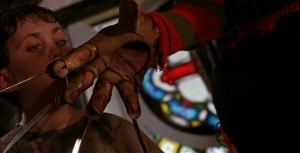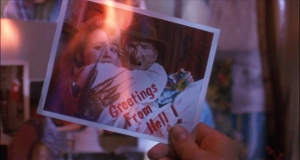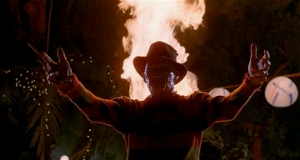
I’m supposed to warn you away from early-90s [Famous Person’s Name] [Semicolon] [Actual Title] films, but I’m pretty sweet on this one. It’s no Mary Shelley’s Frankenstein, but New Nightmare is something we hadn’t seen for quite some time by 1994: a decent Wes Craven film.
(And yes, though I’ll continue to call it New Nightmare for brevity’s sake, I’ll be filing this under “W”). As a member of the Home Video generation, I’m culturally obligated to mention the Craven movies most people (including Craven, it seems) would just as soon forget. People like Shocker and if I tilt my head and squint, I can see that. People like The People Under the Stairs and, hey, why not? But by the mid-90s, a sizable minority of horror fans had begun to vocalize The Unthinkable: maybe Craven just got lucky. Twice. Three times if you stretch. Maybe he’d never been the Master of Horror everyone wanted to believe. Or maybe, like George Lucus, he’d just spent too much time inside The Hollywood Bubble, constantly hearing people tell him how much of a Master of Horror he was/is/will forever be. Continue reading Wes Craven’s New Nightmare (1994)



 Hell yeah! That’s what I’m talking about.
Hell yeah! That’s what I’m talking about. 
